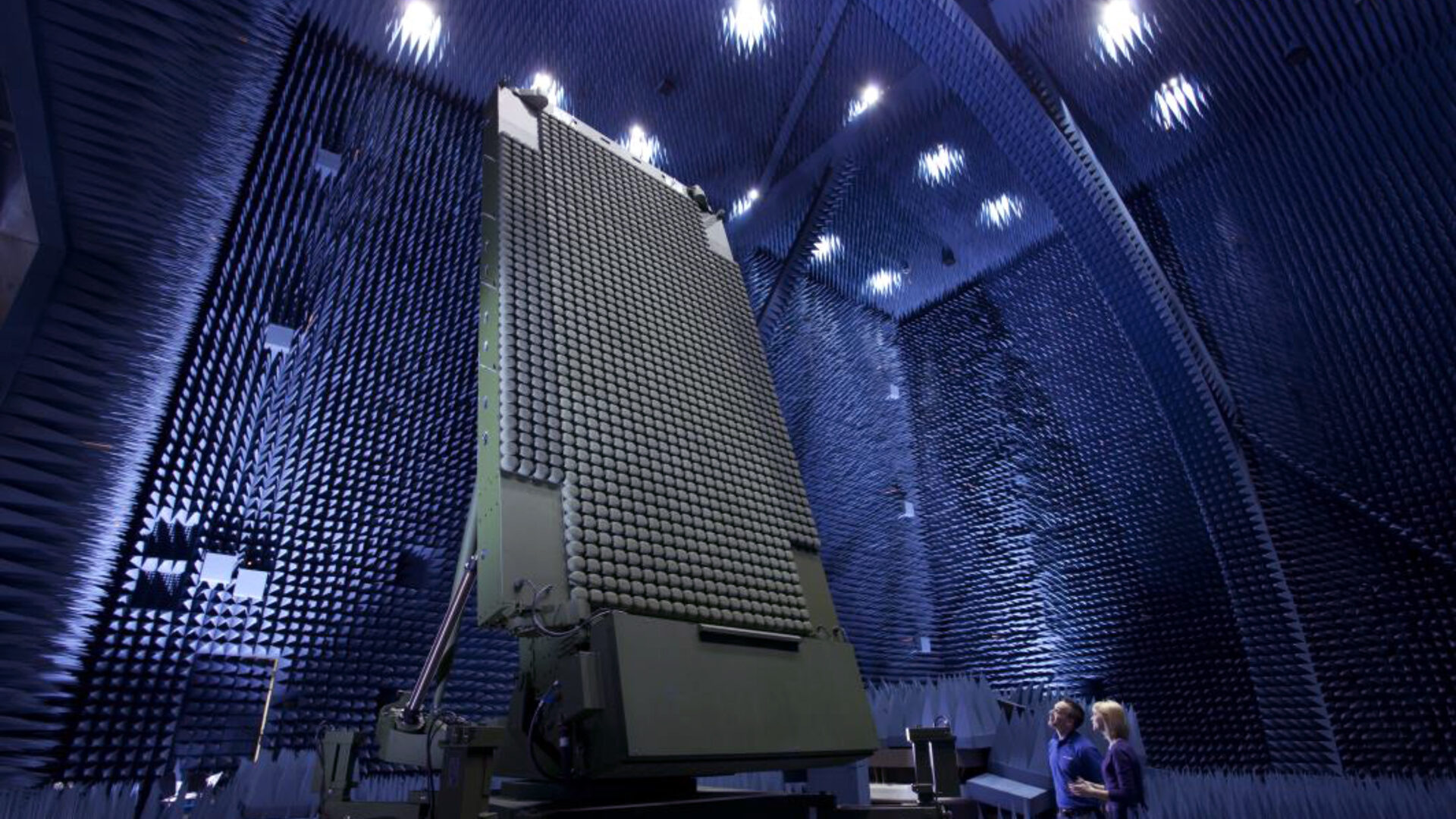
Lockheed Martin’s TPY-4 radar in the company’s anechoic test chamber. (Photo provided by Lockheed Martin.)
WASHINGTON: Nearly two months after landing a key contract with the US Air Force for the program dubbed 3DELRR, Lockheed Martin officials say they are in talks with multiple international customers to purchase the long-range air surveillance radar.
One of those potential customers is the Norwegian Armed Forces, which is currently holding a competition for its P 2078 radar program, Rick Herodes, Lockheed’s program director for ground-based air surveillance systems, told reporters this week during a tour of the company’s facilities in Syracuse, NY.
The need for a long-range, early warning radar is underscored both by Russia’s ongoing aggression in Ukraine as well as its long history of sending its fighter jets into the air space of other nations uninvited.
3DLERR is the shorthand name for the Three-Dimensional Expeditionary Long-Range Radar, a US Air Force initiative to rapidly develop an early warning air surveillance radar that will replace the TPS-75.
Following several years of trying to get the program off the ground — including one canceled contract with Raytheon — the service awarded Lockheed Martin a production contract for the second and third units of the system, also called TPY-4. The current 3DELRR contract has options for the Air Force to purchase up to 35 units.
Lockheed Martin developed and built the first TPY-4 using its own funding, about $100 million, and demonstrated its capabilities in 2020 during the Air Force’s “Speed Dealer” event alongside radars submitted by Northrop Grumman and an Australian company called CEA.
During a tour of Lockheed’s Syracuse facilities, the first TPY-4 was stood inside the company’s anechoic chamber, a special room designed to both prevent echoes and contain the waves a radar gives off. Lockheed uses the special chamber as a place to establish a baseline for each of its radars to compare against a system’s performance under real-world conditions.
That first unit, Herodes said, will be moved next month to a company testing site in Cazenovia, NY, about 40 minutes southeast of the Syracuse campus, where it will stay for about a year. (Lockheed Martin paid for reporters’ travel and hotel expenses to visit its Syracuse campus.)
Herodes stressed one of the advantages of TPY-4 comes from the “pucks” scattered across the radar’s face, which can all be independently controlled as individual radars.
“If you imagine older style radars as putting out beams and receiving energy back, they kind of did it as an entire antenna,” he said. “Each one of those pucks can transmit independently and receive independently and act as its own radar. We could change how the radar transmits and receives so that part of the antenna could do one thing and another part of it could do another thing.”
Separately, the Defense Department inspector general in March announced it would begin an investigation into the 3DELRR program to determine if the service was effectively using middle tier acquisition pathways to procure the radar, Inside Defense reported.
In a ‘world first,’ DARPA project demonstrates AI dogfighting in real jet
“The potential for machine learning in aviation, whether military or civil, is enormous,” said Air Force Col. James Valpiani. “And these fundamental questions of how do we do it, how do we do it safely, how do we train them, are the questions that we are trying to get after.”


























